Welcome to Moda Fabrics!
Labels are for Quilts
Labels are for Quilts
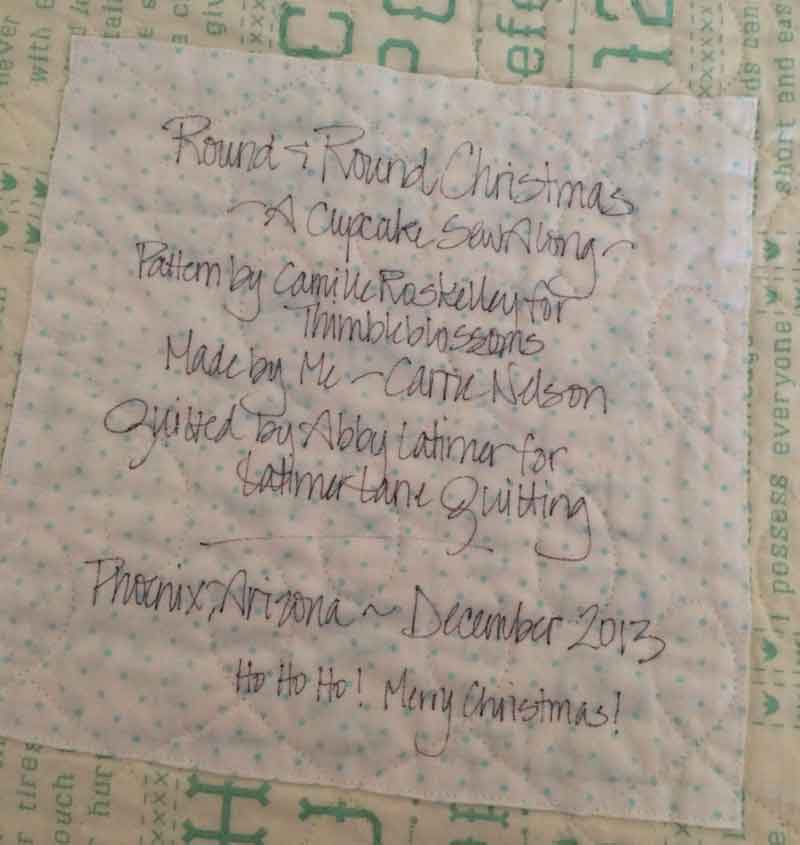 Even though we know they’re important, lots of us don’t label our quilts. The reasons range from being too busy to already having moved on to the next project. Here's some labeling inspiration.
Even though we know they’re important, lots of us don’t label our quilts. The reasons range from being too busy to already having moved on to the next project. Here's some labeling inspiration.
No matter what kind of label you put on your quilt, it should contain some basic information. All People Quilt suggests including the name of the quilt maker, the date and place it was made, the quilt pattern name, the name of the recipient if the quilt is a gift, the occasion for which the quilt was given, and care instructions.
Labels don’t have to be masterpieces. Handwritten labels using permanent markers on 100 percent cotton fabric are quick to make. While these labels may seem too slapdash for use on an elegant quilt, I’ve never regretted including them. When I entered my first quilt in our local guild show I was sewing down to the final deadline and the label was an afterthought. I wrote the required information on a bit of muslin in my none-too-elegant script and stitched it to the back, vowing that when the show was over I’d make a “better” label. Twelve years later that label holds strong and every time I flip the corner of the quilt over and see it, I’m so grateful I included it.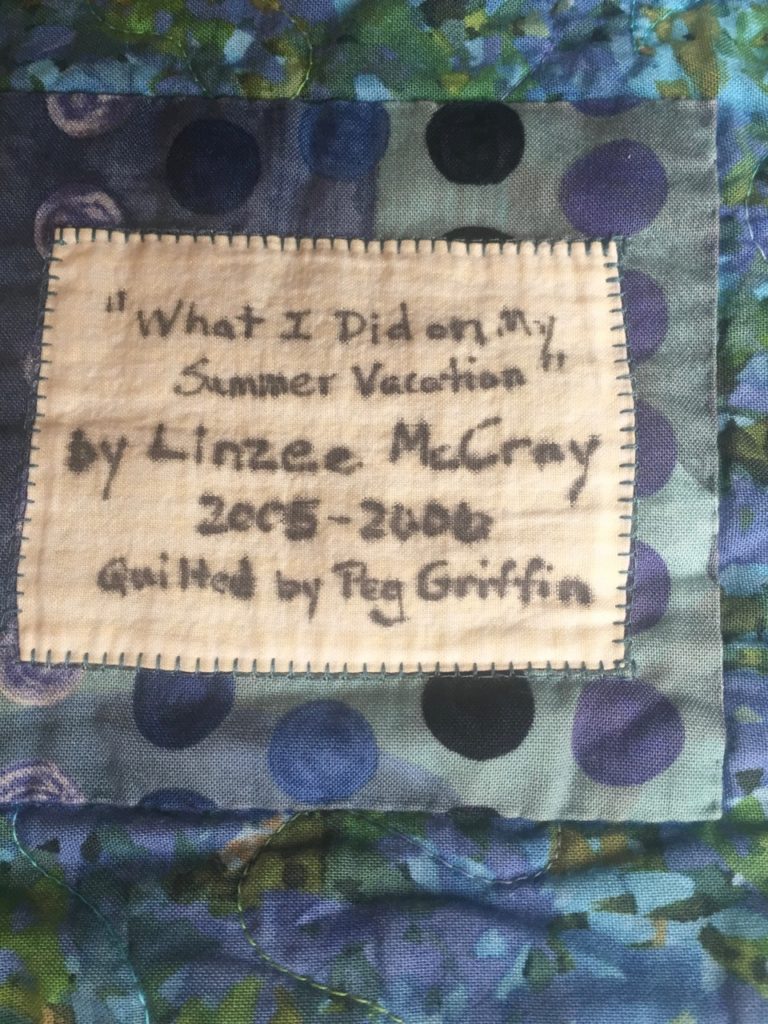
Some people use preprinted labels you can buy and fill in. Moda uses Inkjet Cotton Sheets–fabric-backed paper for use with an inkjet printer—to create labels for each of their quilts—they identify them when they’re traveling to trunk shows, providing proof of ownership in case of loss.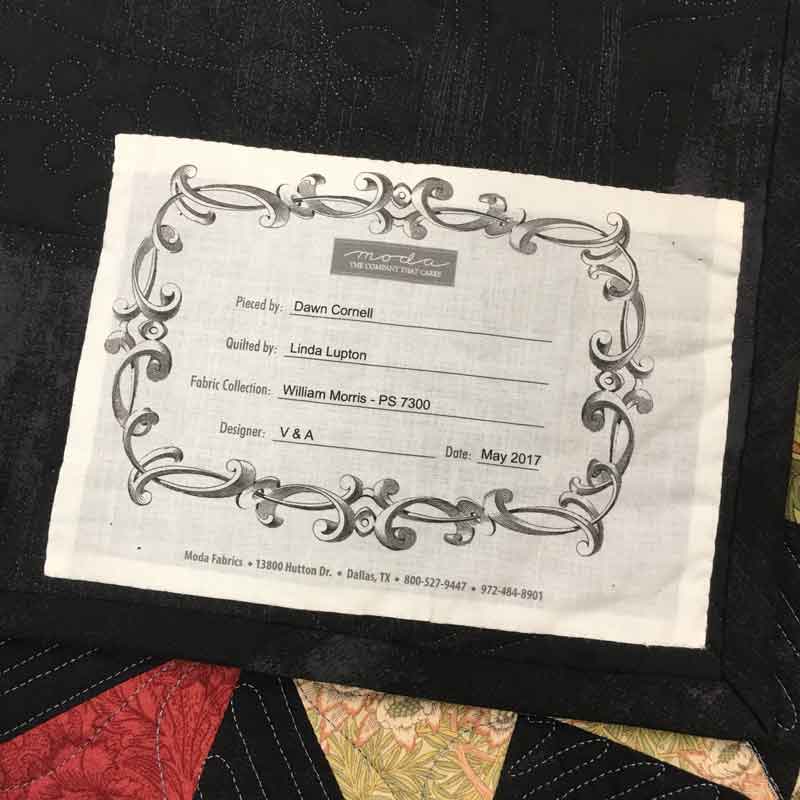
Polly Minnick of Minnick and Simpson designed these labels for her hooked rugs and had them made by Embroider ME. She fills them in and attaches them to each of her finished projects.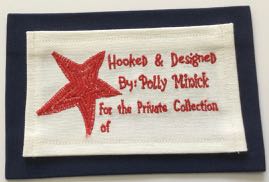
You can also embroider a label. Janet Clare employs her mad machine embroidery skillz to create labels for her quilts. “I usually write them with my sewing machine, then handstitch them on whilst I’m finishing the binding,” she says.
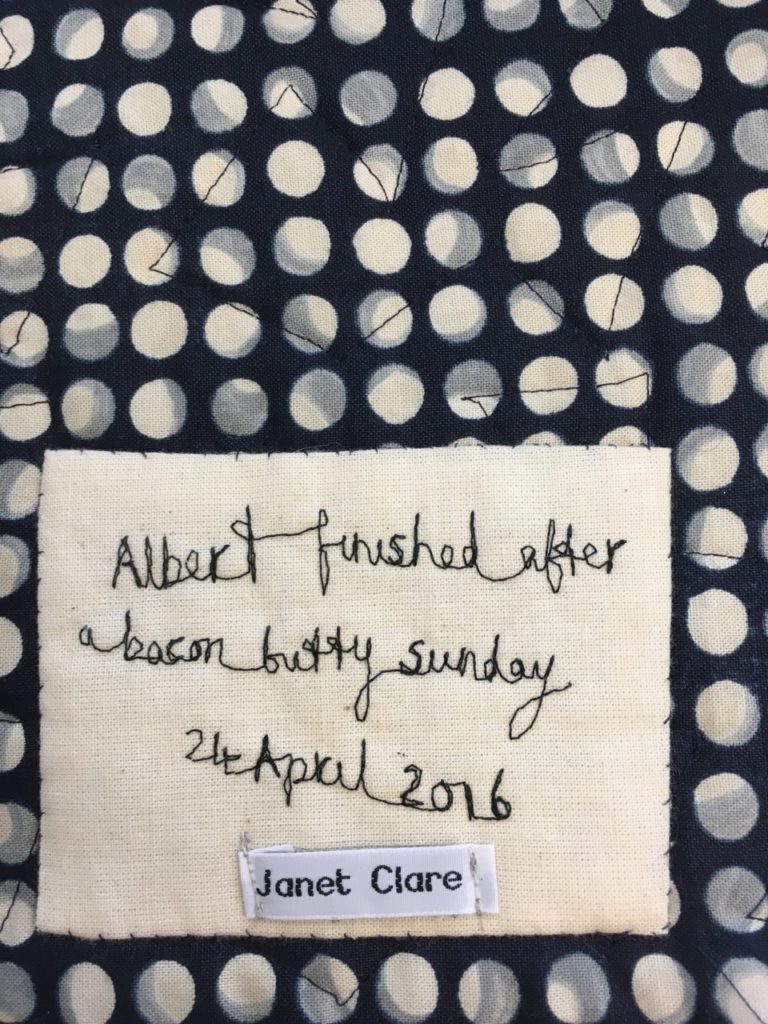 Albert is the name of Janet's quilt and she finished it after a Sunday that included eating bacon buttys (better know in the US as bacon sandwiches).
Albert is the name of Janet's quilt and she finished it after a Sunday that included eating bacon buttys (better know in the US as bacon sandwiches).
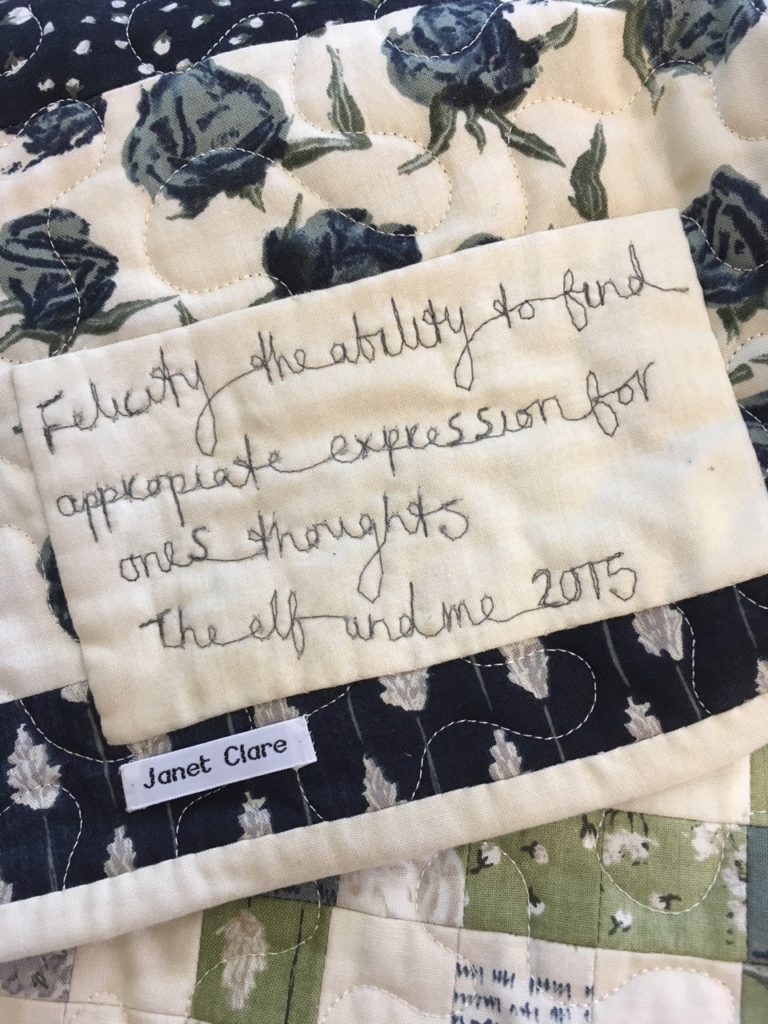 Janet's label for her Felicity quilt, part of her Wordsmith collection. The "elf" she refers to is her longarm quilter Carolyn Clark (@sussexelf on Instagram). The name came because Carolyn will often sit up half the night to meet Janet's "crazy" deadlines, and because she has often surprised Janet by doing all the binding, as well. "Everyone needs and elf," says Janet.
Janet's label for her Felicity quilt, part of her Wordsmith collection. The "elf" she refers to is her longarm quilter Carolyn Clark (@sussexelf on Instagram). The name came because Carolyn will often sit up half the night to meet Janet's "crazy" deadlines, and because she has often surprised Janet by doing all the binding, as well. "Everyone needs and elf," says Janet.
Janet’s quilts are a great example of labels that include “that extra something” —more than just the basics. Carrie Nelson’s are, as well.
Carrie first heard from well-known teacher and quilter Freddy Moran that labels were a way for “artists” to sign their work. Now Carrie’s known for including quotations on her quilt backs—she writes them with Sharpie markers and the Identipen by Sakura.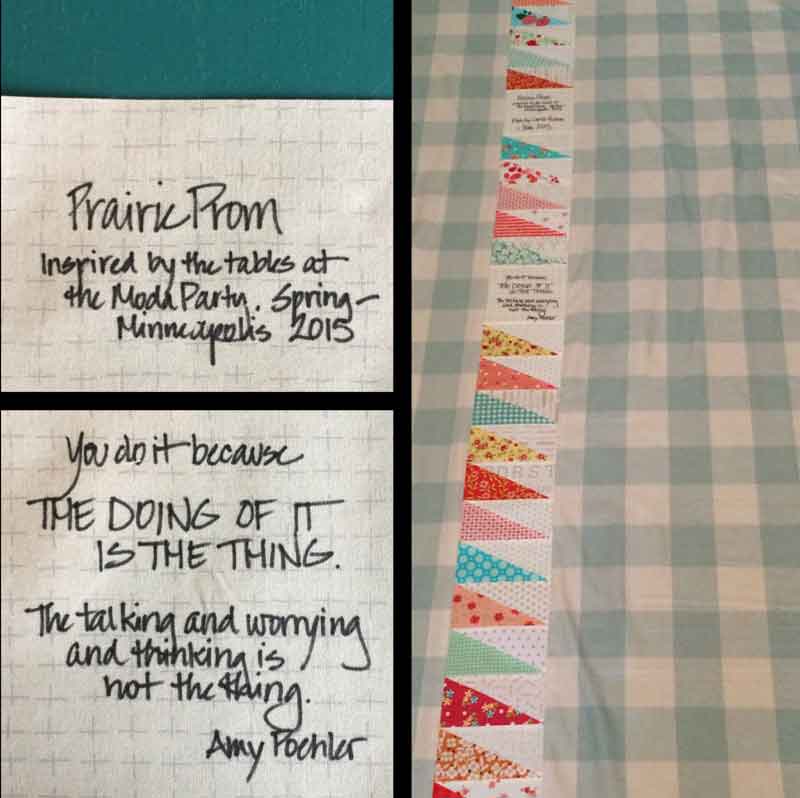
“I have been saving quotes—snips of paper, fortune cookie fortunes, lines of poetry, anything with quotes—since I was a teenager,” she says. “It was something my Dad did... I seem to have inherited that gene.” She’s not sure when she started putting them on her quilts but it’s become a “Carrie-thing” and she enjoys adding them because they are often the inspiration for the name of the quilt.
(As amazed as I was by the beautiful quilt Carrie made for Quilt Market from my Feed Sacks: True Blue fabric, I was knocked out by the back.)
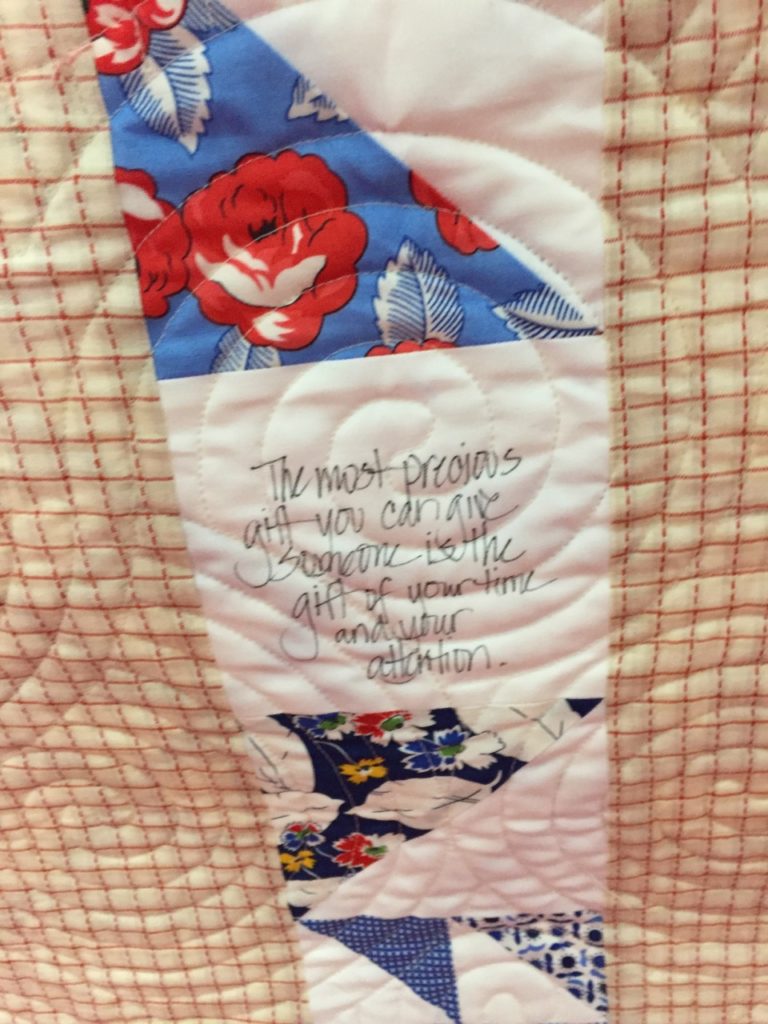
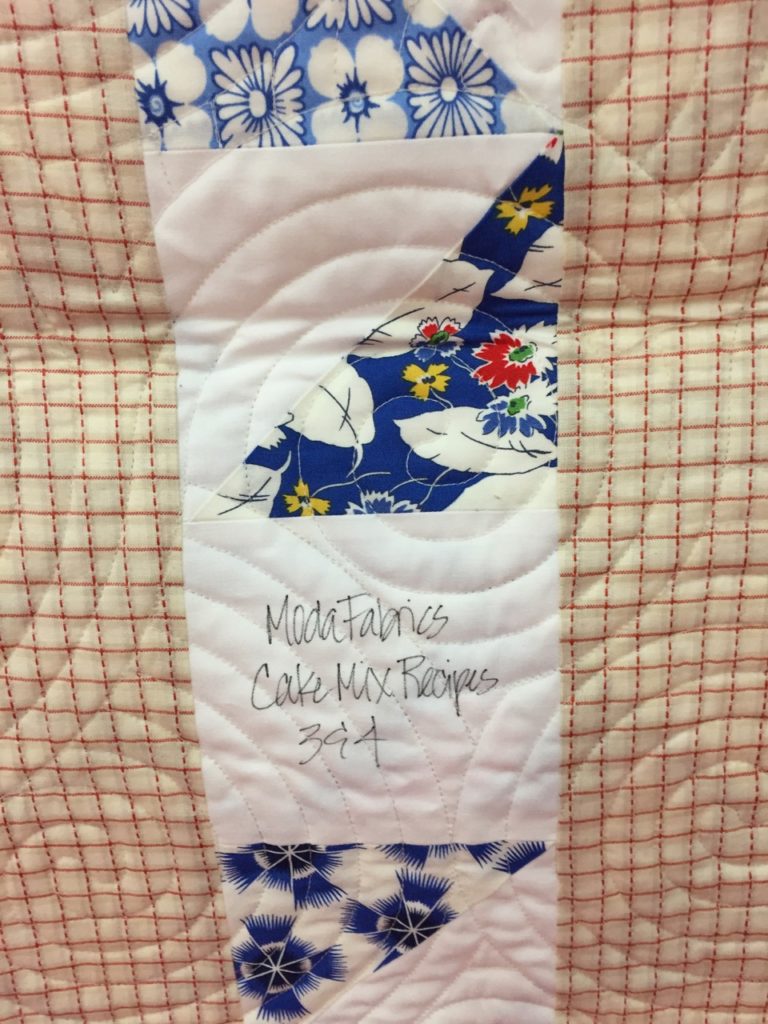
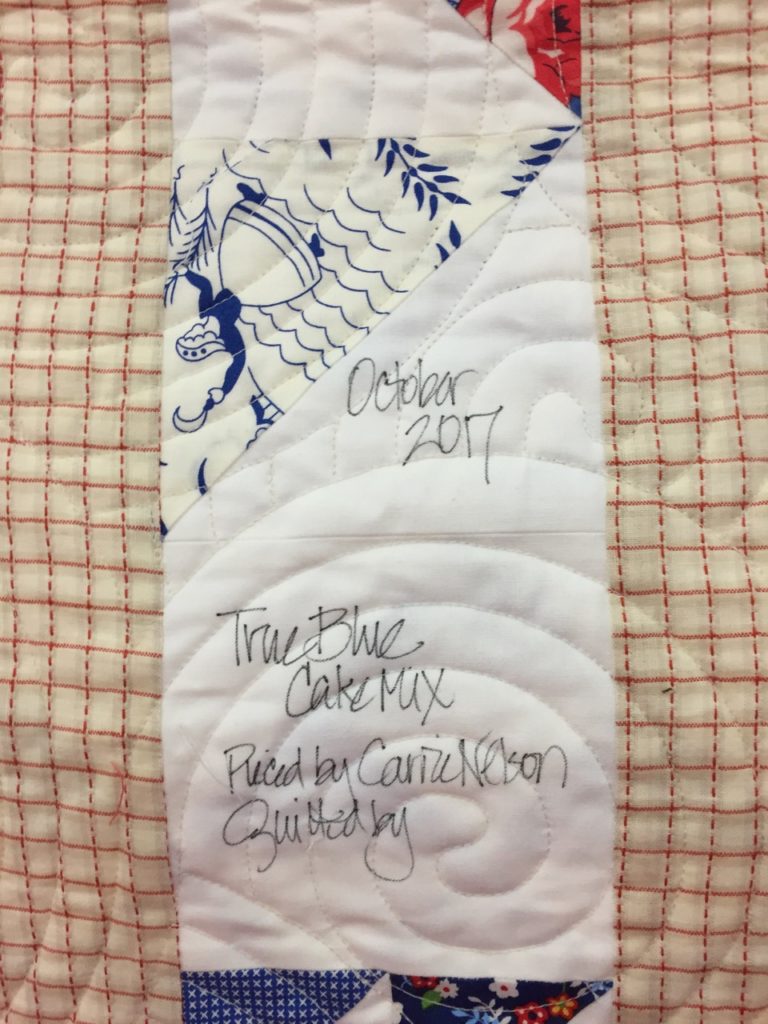
There are myriad ways to attach a label. The most secure is to include it as part of the back, either by piecing it in (as in the quilt above) or sewing it on before the quilt is quilted. It then becomes an integral part of the whole, firmly attached as it’s quilted over. In addition to being sturdy, Carrie says that appraiser Karen Hauser told her that if a quilt is ever stolen it’s nearly impossible for a thief to remove a label attached this way without damaging the quilt. Labels can also be hand stitched directly onto an already-quilted quilt, with care taken not to let stitches come through to the front.
There’s a time and a place for every kind of quilt label, from the simplest to the most ornate. But the bottom line is, label every quilt. You won’t regret it and neither will the lucky person who inherits your quilt. Think of the hours quilt historians and appraisers spend hunting down information about antique quilts. One hundred years from now, when they’re examining your quilt for clues to life in the good old days—the 2010s—they'll thank you.
SaveSave

Comments